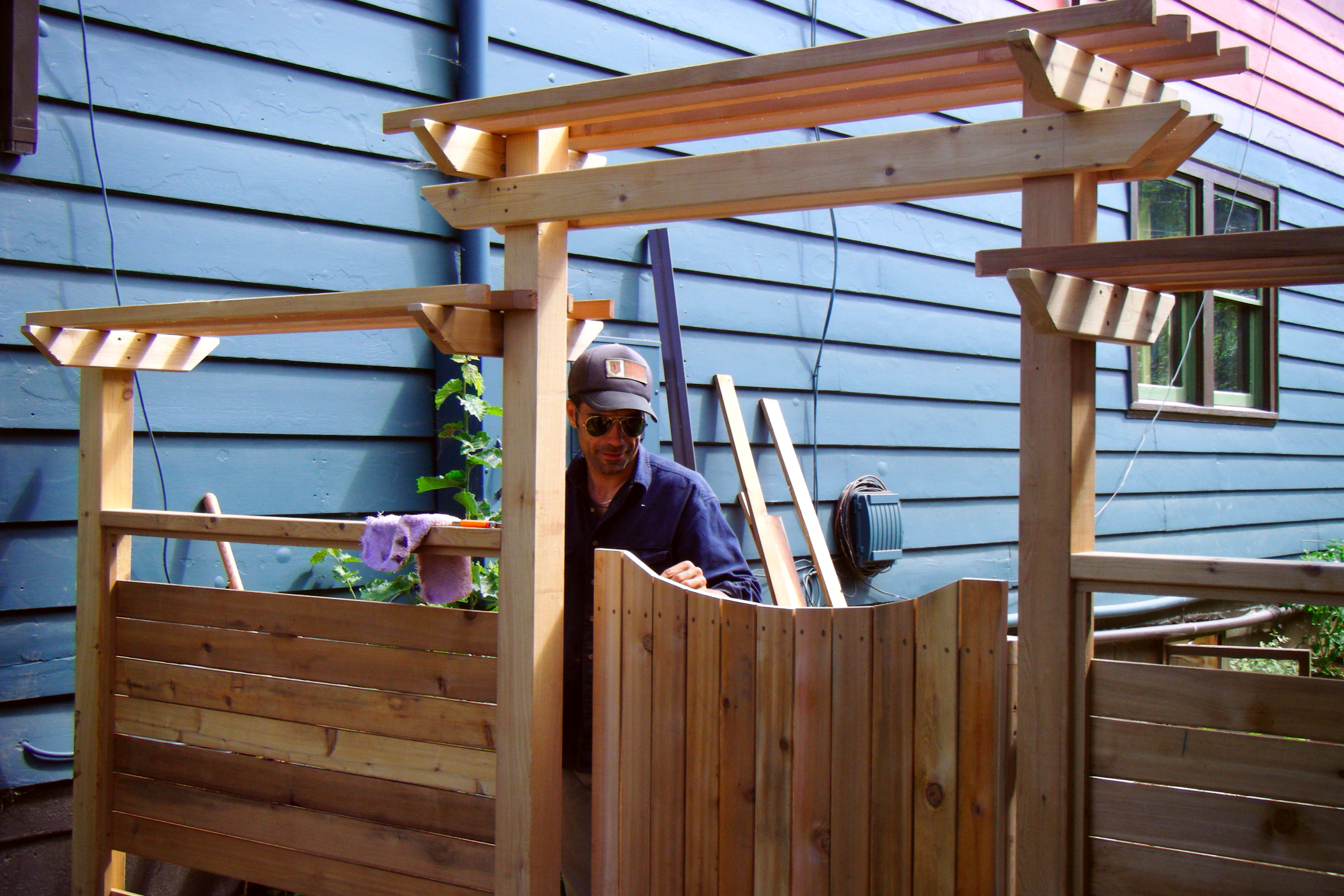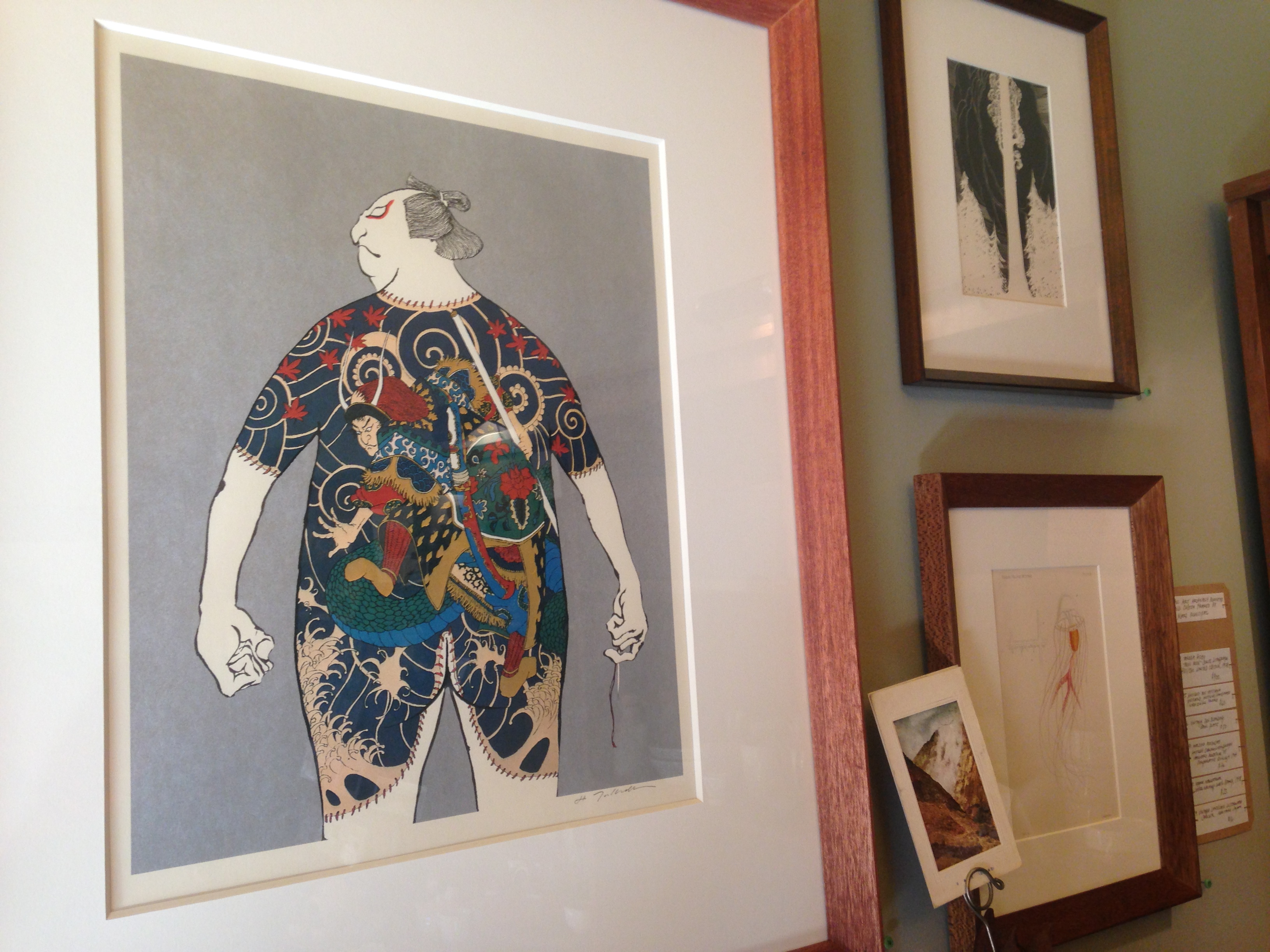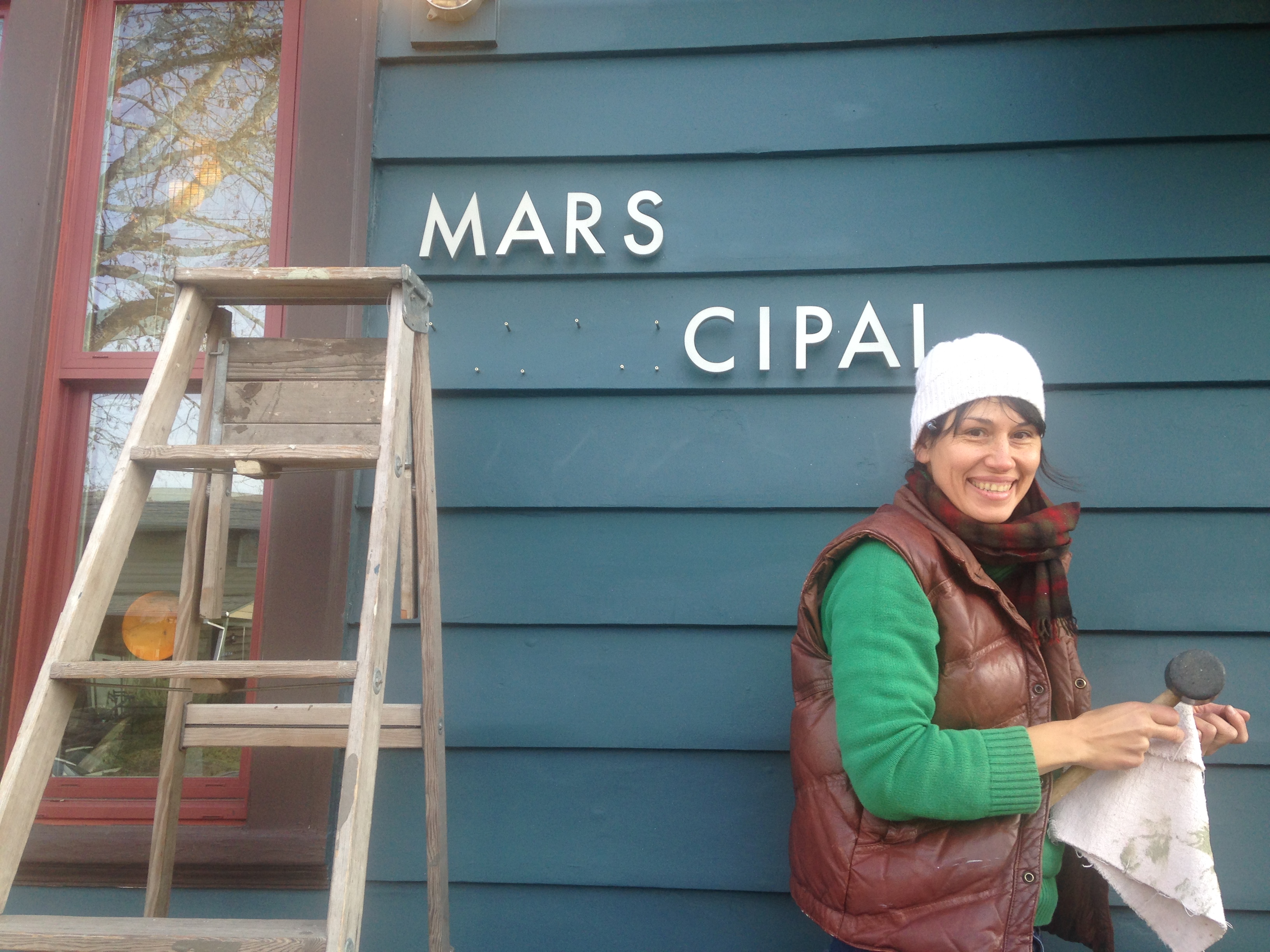2006 - 2019
Portland, Oregon
Mars Municipal House

A blow I did not know I could survive led me to the house I called Mars Municipal.
Five years after I became bereaved in losing my life-partner of ten years to suicide, I was slipping at the edge of grief. Hoping to inspire a change in course, my parents helped me to secure a mortgage.
My background had been arts until bereavement cloistered that part of my brain. Construction immersed me in physical labor, and provided access to craft disconnected from my grief. So began my education in the rehabilitation of an 1887 farmhouse, and myself.
The house was built in Albina, Oregon, a township consolidated by Portland in 1891. Records at the Oregon Historical Society show the only buildings in the vicinity were a church, firehouse, and handful of farmhouses. Writing on plaster in the stairwell reads, “This house was built in 1887 - Jed Hessler - remodeled in 1939”. The Volga German Institute lists the family name “Hessler from Norka” for the area and period.
In the 1950s, that neighborhood was razed making way for I-84 and the Lloyd Center mall. An acquaintance whose father worked in construction there, shared his father’s memories of carved old growth banisters and other fine woodwork from countless historic houses being burned in towering piles, day after day, after day. The simple farmhouse in question was saved by some frugal soul, jacked-up and hauled north to the Boise neighborhood. The lot in a once industrial row where the house now sits, was likely an unofficial garbage site during the first half of the 20th century. A power station occupies the house’s original location at Grand Avenue and Clackamas Street.
Because of the sweeping Rose Quarter demolitions, there’s very good chance the Mars Municipal house is the only Albina home remaining from its original neighborhood and period of construction.
Like an impervious lifeboat, this big old box of a farmhouse took me in. I filled it with all of myself I no longer knew what to do with, relentlessly taking things apart and putting them back together again for the better part of the next decade.

Friends from Portland’s workingclass building community - the musicians’ faction in particular - helped me to rehabilitate the house using mainly grit and salvage. During our most intensive work, I spent several years literally camped in the unfinished basement, first accompanied by two dear friends who labored the lion’s share with me, until floors above ground were suitable for them to inhabit. I made ends meet providing maintenance and housekeeping services by bicycle.
Everything I’ve learned about building sparked then, with a great deal owed to the men who patiently encouraged, taught, and assisted me; beginning with my father.
The surrounding garden caught my overflow, a recess from construction. I planted several dozen fruiting shrubs, trees, and vines. Vigorously focused on a utilitarian landscape, I exclusively planted edible perennials for many seasons, until I came to also appreciate purely ornamental plants as good medicine. I practiced pruning near daily, watching my choices play out over a decade. Gardening and pruning naturally expanded into my livelihood.
Friends came and went in residence at the house. More than a few times, previously unknown tenants became family, helping me weather ups and downs. Construction at the house began to recede.





In 2015, new challenges brought new restlessness. I was reluctantly accepting I would not be a parent, and reckoning with my father’s cancer diagosis.
I opened a popup gallery and personal studio at the front of the house, culling from my evolving collection of ceramics and ephemera. Prioritizing interaction with those who would randomly wander in, I did not advertise. It was my way of making a very quiet debut, while trying to rediscover how to temper life by getting art out of my system after fifteen years compartmentalized.
Frustrated with ways our neighborhood was changing, for two years I also advocated with other neighbors toward transformation of the neglected alley behind the house into a pedestrian-friendly green space - and toward better city policy for community placemaking to attenuate impacts of untempered development. As some Portland city agents stifled these efforts, I reconsidered my situation. Pulling back from bureaucracy and online culture, I took several long solo road trips in search of direction.

New Year’s Day, 2017, I began a return drive to Portland OR from my sister’s in Ft Worth TX, with a pilgrimage to our childhood home in Sierra Vista AZ, which I had not seen in over 20 years. My mind was especially raw and open during that trip. I stopped by friends’ in New Mexico, and they instructed me to visit Portal AZ on my way to Sierra Vista - which, I did. Portal beckoned me further even as it receded along my route.
In the following days of long open road and involuntary realignment with my childhood desert, I came to the conclusion that my time in the Pacific Northwest was finished. I decided I would leave the Mars Municipal house behind, and aim to found an establishment providing grassroots stewardship and accommodations near Portal AZ, emphasizing self-reliance with special attention to arts and sciences.
Upon returning to Oregon, I started imagining how to let go of the house in a way that would be worthy of its history to me. Six months later, I met Mariano, a designer, printer, and bookmaker from Buenos Aires. We soon married, and moved his design and print practice into what had been my popup studio.
Spring 2018, Mariano and I began the process of getting the Mars Municipal house into the hands of the Portland development team we most admire, led by Owen Gabbert. That transition was completed December 2019, and we look forward to following the property’s evolution and growing integrity under the ownership and exemplary vision of Owen Gabbert and his team
— Melinda Matson Spina
-